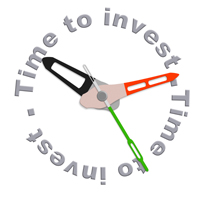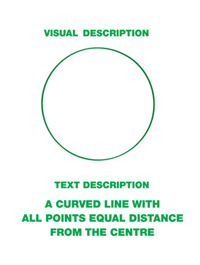By Reach Brands
Whatever size of company we work with – or talk to – they all seem to agree that the management of senior people or stakeholder engagement is a big issue.
There are so many stories that we’ve heard of – and very occasionally experienced ourselves – where senior management ignores consumer research and months of hard work by their team to decide that ‘it will look better green‘. Or ’the product description doesn’t work for me, why don’t we call it…’.
You try to argue your case and make your recommendations but they fall on deaf ears. So here are some of our tips on how to gain approval of concepts and ideas – easily and smoothly – on their journey up through the approval ranks.
And for those of you that are senior management reading this, it should help you understand how the propensity for personal bias and the lack of the full picture causes unnecessary stress for your team, increased project costs and timings and ultimately a weaker end result. At the end of this article are some ideas on how to lead and direct your team to make sure this doesn’t happen.

- Not only will they fully understand the rationale for decisions and recommendations, but they are also reassured that a much wider spectrum of alternatives have been considered and eliminated.
- It enables them to ‘have their say’ and get their thoughts, beliefs and theories out on the table. It reassures them that their opinion has been voiced and put into the mix. It also means that everyone’s now fully aware of their biases and the results they’re expecting. It’s now known and can be managed.
- It’s just human nature that people are more co-operative on endeavors they helped to design or inform. They feel like they invested and have part ownership. This is summed up by a great quote from David Schimmel, CEO of And Partners, “If they birthed it, they can’t kill it.”
Of course we know that this is the ideal situation. But packed schedules and other priorities of senior management mean that it can’t always happen this way.
So what other ways and tools are available to ensure buy-in? Well, before we go into this we need to go through some background on how people make decisions.

Now we know that most decisions are emotional, and then add onto that brand projects that involve creativity, like new product development concepts, brand design, brand repositioning or an advertising idea – it’s easy to see why there’s a large propensity for decision making to be influenced by personal bias. It’s just human nature and isn’t going to change. Instead we need to prepare for it and manage it.
So here are our top tips for a smooth approval process:
 1. Invest time
1. Invest time
 2. Think like a lawyer
2. Think like a lawyer
 3. Make it visual
3. Make it visual
There’s a lot of evidence to show that visuals speed up understanding of information and help to create a more accurate understanding. It also helps to retain information. In his book Memory Techniques, James Manktelow says 65% of people absorb information visually, 30% learn through hearing and 5% through simulation (kinaesthetic or touch). In short, our brains are wired for pictures rather than text and data.
Images reach for the emotions – and we already know that emotions help decision-making. So visualise what you’re saying, don’t just tell them. SHOW them. Use visuals that explain why alternatives don’t work, don’t just rely on your recommendation. Think about ways of using visuals to enable ease of comparisons or the consequences of different strategies. On top of this, visuals can bring ideas alive, create excitement and buy-in.
Remember, a picture is worth a thousand words.
 4. Tell a story
4. Tell a story
We don’t mean telling lies or a fairytale.
Throughout history, humans have used stories as a means to gather and learn information e.g. religion, culture, survival skills. Stories and storytelling reverberate with the emotional right side of the brain. They have greater impact and recall than information that’s presented in a quantitative or factual manner. Stories touch the emotions that convince, persuade and make people buy. Fact.
When I was a lowly Assistant Brand Manager at Unilever there were two marketers who always got buy-in to their projects. They got people excited and their projects always had momentum. Looking back I can see that they were great storytellers. They brought alive their consumers’ lives, thoughts and issues. It felt like they were very close to their consumers, understood them and were passionate about them. They were Brainjuicer’s founder John Kearon, and chairman and founder of ?Whatif!, Matthew Kingdon. Daniel Pink in A Whole New Mind (2006) argues that, ‘Gone is the age of left brain dominance; the future belongs to storytellers, creative and empathetic right brain thinkers’.
So turn your presentation of an idea or concept into a story that really brings alive how and why the consumer will engage and be compelled to purchase your recommendations.
Stakeholder engagement is never guaranteed to be a totally smooth process as it’s dependent on the nature and character of individual senior people, company politics etc. But by using these tools, the approval process will be a lot easier than without them. Just give it a go!

- Make sure all projects that involve creativity are treated in the same way as you would treat the development of an advertising campaign – i.e. formal meetings – where you are expecting a presentation with strong rationale to be given. It doesn’t have to be a lengthy meeting but sharing your expectations will ensure that time and thought is put into what needs to be prepared.
- Ask for visual workings or unseen illustrative stages (e.g. stimulus material or concepts that were rejected) to be brought along just in case there is debate. It will help you understand the journey. It comes back to that fact that visuals help understanding and are a great common frame of reference.
- If you feel that something hasn’t been explored, or you have an inkling that some other iteration would work better, then ask to see it visualised. And for a case to be put forward as to why it would and wouldn’t work. Saying ‘I think it should be green’ will mean that many junior people will ask the consultancy or agency to ‘just do it’ even though they know it’s not the right way forward. They either don’t have the ability yet to argue back or the will/strength to want to.
- Just keep in mind that you’re not normal! What we mean by that is; 1. You probably have a degree so that makes you one of the lucky 20%. And 2. You’re in advertising, marketing or design (2% of the working population). Your sensitivity to communication and graphics will be much more acute and advanced than the general public. Therefore it stands to reason that using your own judgement is faulty, as it’s not going to be a normal reaction.
- Really use the consultancy or agency to work through the issues at hand. Very few marketers will have received any formal training with regards to creating brands, NPD concepts or brand design. Whereas days would have been spent on media buying, presentation skills courses etc. People who join innovation and design consultancies from the client side are consistently gobsmacked at how little they know, and with hindsight, see how they had been overseeing projects ineffectively.
We hope this article helps the management of projects up and down the chain of command to produce improved effectiveness and ultimately more successful brands and products. You never know we might get to see smiles at the mention of stakeholder engagement and possibly help inspire some people to become great storytellers…
By Natalie Reed, Strategy Partner at Reach
Contact Natalie
 1. Invest time
1. Invest time 2. Think like a lawyer
2. Think like a lawyer 3. Make it visual
3. Make it visual 4. Tell a story
4. Tell a story